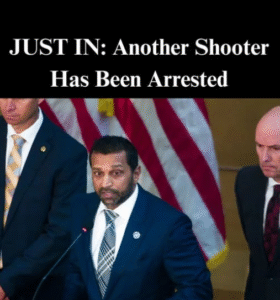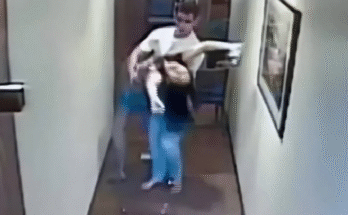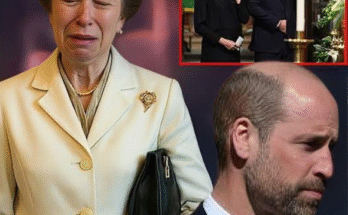ABC Shooting: A Note, A Gun, and a Chilling Warning
On a quiet Friday afternoon in Sacramento, California, the hum of newsroom chatter at ABC10 was shattered by the crack of gunfire. At least three bullets pierced the station’s lobby window, sending staff scrambling for cover. No one was injured—but the message was loud and clear. This wasn’t random. It was personal.
The suspect, 64-year-old Anibal Hernandez Santana, was arrested hours later. But what investigators found in his car would turn a frightening incident into a federal case with political overtones: a handwritten note naming Kash Patel, Pam Bondi, and Dan Bongino. It read: “For hiding Epstein & ignoring red flags. Do not support Patel, Bongino, & AG Pam Bondi. They’re next. — C.K. from above.”
The Shooter and His Motive
Hernandez Santana wasn’t unknown to law enforcement. His social media history revealed a stream of anti-Trump commentary, conspiracy-laced posts, and calls for resistance. In July, he wrote that he was ready to “fight like hell” against the Trump administration. Days before the shooting, he posted: “Where is a good heart attack when we need it the most?? Please join in my thoughts and prayers for the physical demise of our fearful leader.”
The FBI quickly took over the case, charging Hernandez Santana with interference with a licensed communications station and possession of a firearm within a school zone. Surveillance footage showed him wearing a gray T-shirt, dark pants, and a satchel containing a 9mm handgun. Gun residue tests came back positive. On his refrigerator, agents found a whiteboard with the chilling phrase: “Do the Next Scary Thing.”
Why Bondi and Patel?
Pam Bondi, the former Attorney General of Florida, and Kash Patel, the FBI Director at the time, were both prominent figures in the Trump administration. Bondi had been a vocal defender of Trump during his impeachment proceedings, while Patel was known for his role in intelligence and national security.
The note found in Hernandez Santana’s car suggested he believed these officials were complicit in covering up crimes related to Jeffrey Epstein. Whether this was rooted in fact or fueled by online conspiracy theories remains unclear. But the threat was unmistakable: “They’re next.”
The Fallout
The shooting sparked immediate reactions from federal authorities. “Targeted acts of violence are unacceptable and will be pursued to the fullest extent of the law,” Patel said in a statement. Bondi, though not present at the scene, reportedly increased her security detail following the incident.
The Sacramento County District Attorney’s Office filed additional charges: discharging a firearm into an inhabited dwelling, assault with a semi-automatic firearm, and personal use of a firearm. If convicted, Hernandez Santana faces up to 17 years in state prison, not including federal penalties.
A Broader Pattern?
This wasn’t the first time political figures had been targeted in recent years. The rise of politically motivated violence has alarmed officials across the spectrum. From pipe bombs mailed to Democratic leaders to threats against election workers, the line between online rhetoric and real-world danger has blurred.
Hernandez Santana’s case fits a disturbing mold: a lone actor radicalized by online content, convinced of a hidden truth, and willing to act violently to expose it.
The Role of Media and Misinformation
ABC10 wasn’t just a random target. The station had recently aired segments critical of conspiracy theories and misinformation. Some speculated that Hernandez Santana saw the outlet as part of a broader cover-up. Others pointed to a protest held outside the station the day before the shooting, where demonstrators criticized the suspension of a controversial host.
In this climate, media outlets have become battlegrounds—not just for ideas, but for bullets.
Jack Monroe’s Echo
The incident drew eerie parallels to the fictional story of Officer Laura Monroe, who vanished in 1977 while investigating corruption. Her patrol car was found 13 years later, exposing a deadly cover-up. Though fictional, Monroe’s tale resonated with the real-life implications of Hernandez Santana’s actions: a belief in hidden truths, a desire for justice, and a willingness to confront power—no matter the cost.
What Comes Next
Hernandez Santana’s trial is expected to begin later this year. His attorney argues that the suspect is being unfairly targeted due to his political beliefs. “If you look at his social media, they’re going to say, ‘Boy, it sure shows that he’s liberal and left wing.’ So you think they’re going to overlook something like that? I don’t think so,” said Mark Reichel.
But prosecutors maintain that the case is about violence, not ideology. “This is about protecting public safety and holding accountable those who threaten it,” said a spokesperson for the U.S. Attorney’s Office.
A Nation on Edge
As America grapples with deep political divisions, cases like Hernandez Santana’s serve as a stark reminder of the consequences of unchecked rage. The line between protest and violence is thin—and growing thinner.
For Bondi and Patel, the threat was real. For ABC10, the scars remain. And for the public, the question lingers: how do we stop the next “scary thing” before it happens?



